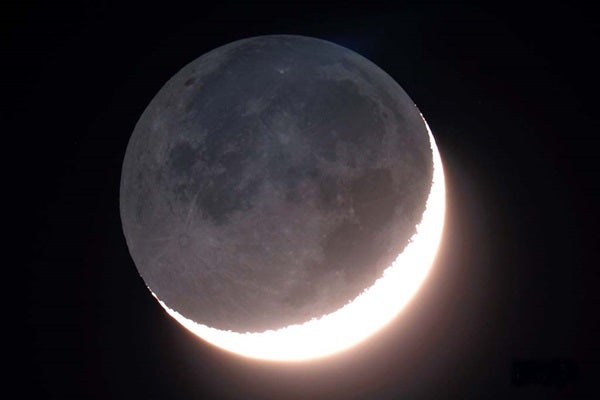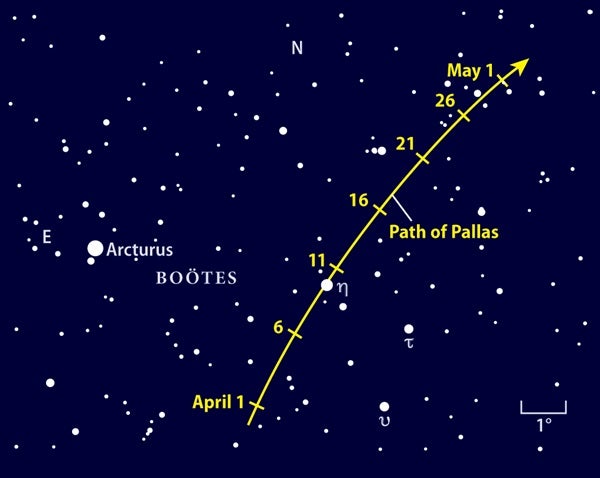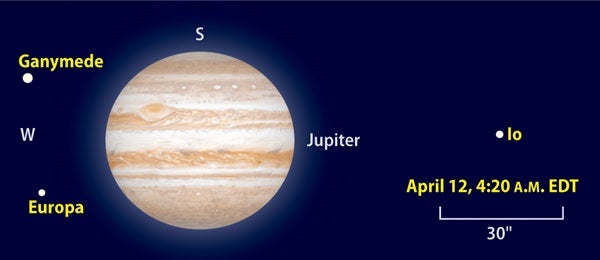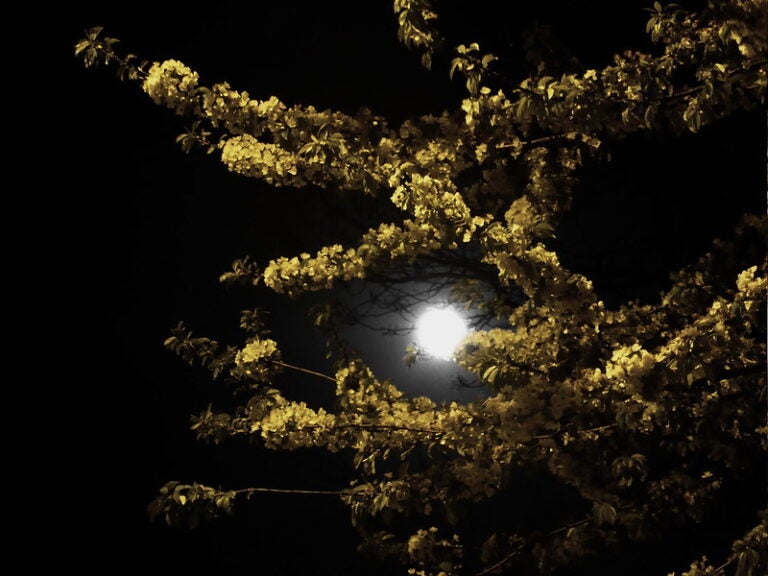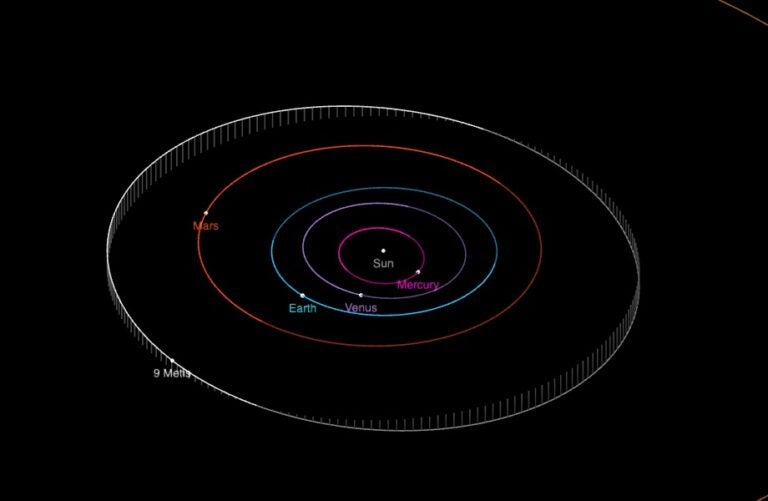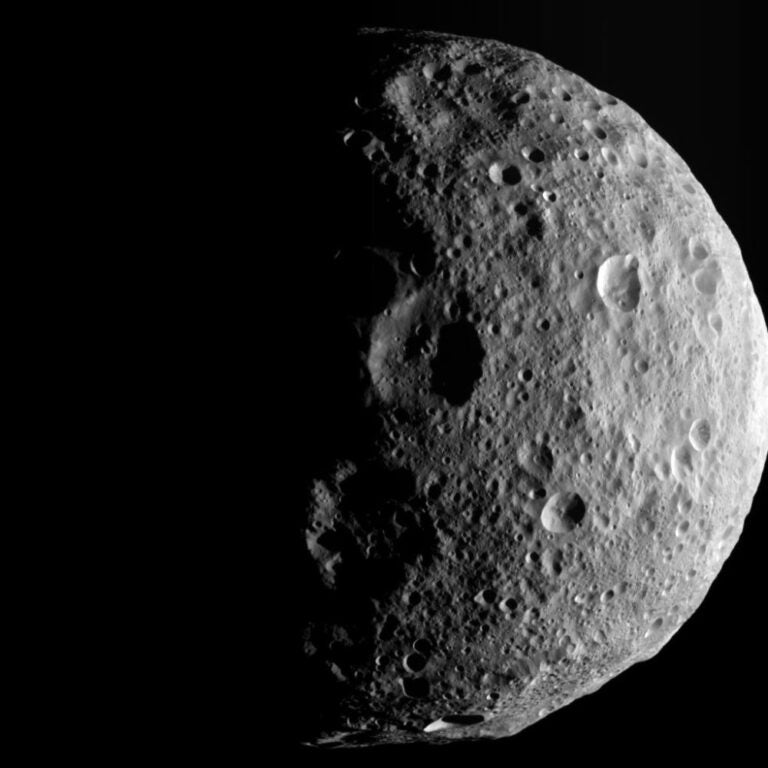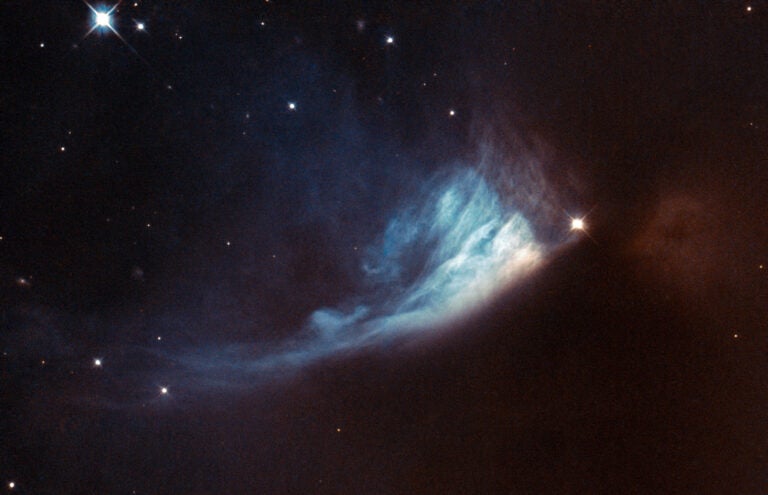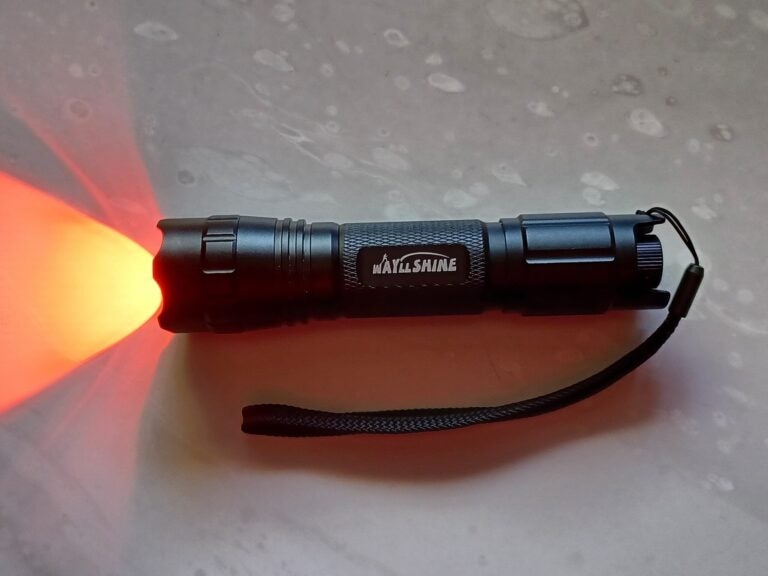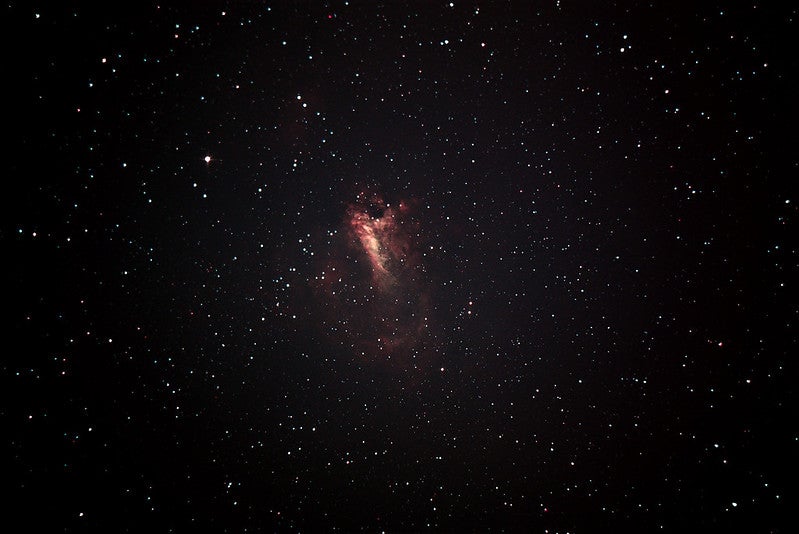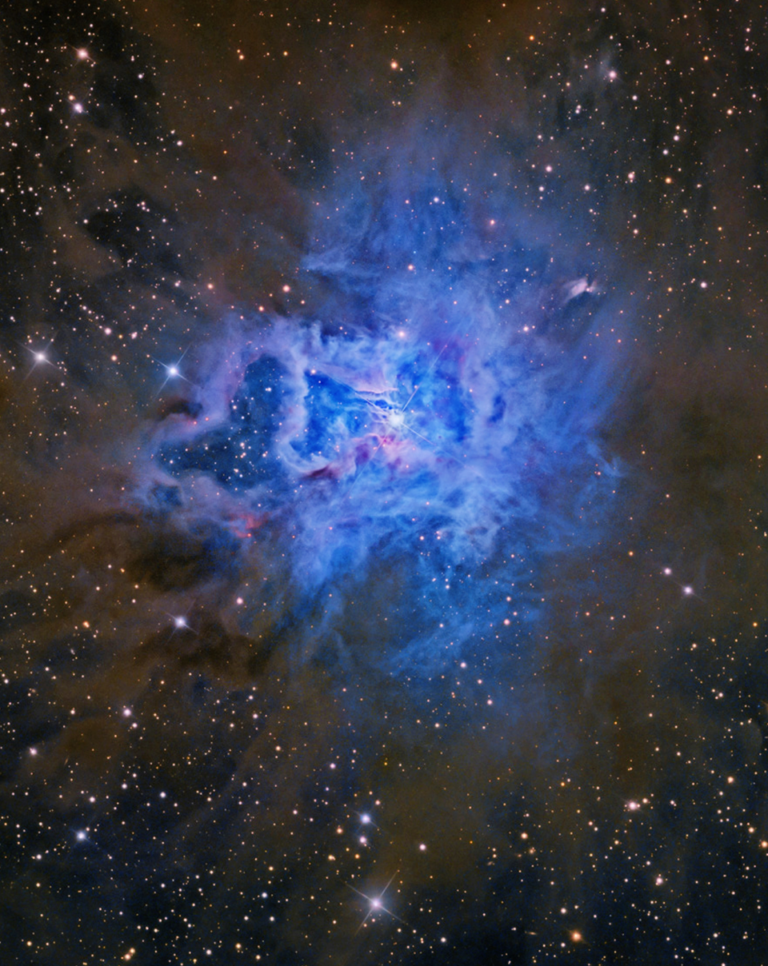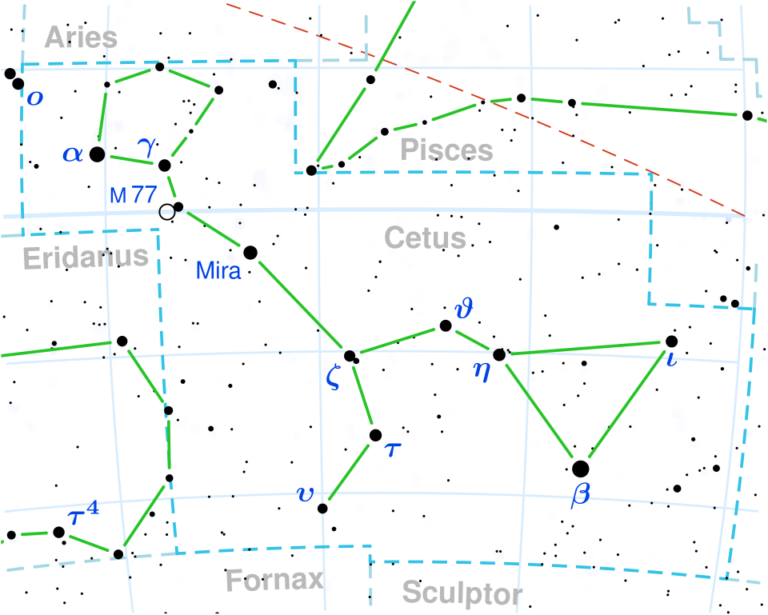New Moon occurs at 4:50 a.m. EDT. At its New phase, the Moon crosses the sky with the Sun and so remains hidden in our star’s glare.
Orion the Hunter stands out in the southwest as darkness falls this week. The conspicuous constellation appears slightly askew compared with its appearance in winter’s evening sky. Now, the three-star belt is aligned parallel to the horizon while blue-white Rigel hangs directly below the belt and ruddy Betelgeuse stands directly above.
Saturday, April 6
With an age of 4.5 billion years, “young” might not seem an appropriate word to describe our Moon. But tonight, you have an exceptional opportunity to see what astronomers call a “young Moon” — a slender crescent visible in the early evening sky. With New Moon having occurred yesterday morning, only 3 percent of our satellite’s disk appears illuminated after sunset tonight. (Tomorrow evening, a 7-percent-lit lunar crescent hangs noticeably higher in the sky.) You should notice an ashen light faintly illuminating the Moon’s dark side. This is “earthshine,” sunlight reflected by Earth that reaches the Moon and then reflects back to our waiting eyes.
Sunday, April 7
Saturn grows more conspicuous in the morning sky with each passing week. The ringed planet rises before 3 a.m. local daylight time and climbs 20° above the southeastern horizon by the time twilight begins. Saturn shines at magnitude 0.6 and appears significantly brighter than any of the background stars in its host constellation, Sagittarius the Archer. A telescope shows the gas giant’s 17″-diameter disk and a spectacular ring system that spans 37″ and tilts 24° to our line of sight.
Monday, April 8
The Moon moves an average of 13° eastward relative to the background stars each day. And because the ecliptic — the apparent path of the Sun across our sky that the planets and Moon follow closely — makes a steep angle to the western horizon after sunset at this time of year, the waxing Moon gains nearly 13° of altitude each evening. Tonight, the 13-percent-lit crescent makes a pretty addition to Mars and the bright Pleiades and Hyades star clusters in Taurus the Bull. Our satellite stands 6° south of the Red Planet and 8° west of Aldebaran, the ruddy 1st-magnitude star that appears to anchor the Hyades. (In reality, the star is a foreground object.) The objects remain on display from twilight until they start to set around 11 p.m. local daylight time. Of course, magnitude 1.5 Mars remains a fixture in Taurus all week, sliding eastward between the two clusters.
Asteroid 2 Pallas reaches opposition and peak visibility tonight. Glowing at magnitude 7.9, it should be relatively easy to spot with binoculars and a cinch to see through a telescope of any size if you know where to look. And right now, the night sky’s fourth-brightest star points the way. Pallas lies 5° west of Arcturus in Boötes the Herdsman, which stands high in the east during late evening. And tomorrow night, Pallas slides just 2′ east of magnitude 2.7 Eta (η) Boötis. You should be able to detect the asteroid’s motion in as little as 30 minutes. Use the finder chart above to home in on Pallas on other nights this month.
Wednesday, April 10
About an hour before sunrise, look low in the eastern sky for Venus. The planet shines brilliantly at magnitude –3.9 and pierces the growing twilight with ease. And this morning, you can use the inner world to track down distant Neptune. The two planets appear 0.3° apart and lie in the same field of view through a telescope at low power. You’ll need an exceptionally clear sky to spot 8th-magnitude Neptune, however, because it is low and in twilight. From mid-northern latitudes, the pair lies 7° high a half-hour before sunrise. Conditions improve dramatically the farther south you live; from mid-southern latitudes, the worlds stand 15° high as twilight begins. Don’t confuse Neptune with the 4th-magnitude star Phi (φ) Aquarii, which lies 5′ south of the planet this morning.
Thursday, April 11
Mercury reaches greatest elongation today, when it lies 28° west of the Sun and appears 4° high in the east 30 minutes before sunrise. The innermost planet shines at magnitude 0.2 and should appear as an inconspicuous dot to the naked eye, but it stands out through binoculars. Use Venus, which shines brilliantly 5° to Mercury’s upper right, as a guide. For Northern Hemisphere observers, this morning apparition ranks as Mercury’s worst of 2019. But from south of the equator, this is the planet’s best predawn show of the year. It rises two hours before the Sun and climbs 15° above the eastern horizon an hour before sunup.
First Quarter Moon arrives at 3:06 p.m. EDT. You can find the half-lit orb high in the southwest as darkness falls; it doesn’t set until nearly 3 a.m. local daylight time tomorrow morning. The Moon currently lies on the border between Gemini and Cancer, about 10° south of the Twins’ brightest stars, Castor and Pollux.
Jupiter continues to grow more prominent before dawn. The giant planet rises around 12:30 a.m. local daylight time and climbs 30° high in the south an hour before sunup. It also shines at magnitude –2.3, making it the brightest point of light in the morning sky until Venus rises after 5 a.m. A telescope reveals at least two conspicuous cloud belts on Jupiter’s 41″-diameter disk. And this morning, you can watch Ganymede, the solar system’s largest moon, slowly materialize in what seems like a celestial magic act. The satellite starts to emerge from the giant planet’s shadow at 4:02 a.m. EDT. But Ganymede is so big that it takes 15 minutes for it to return to full sunlight. The brightening dot appears 22″ west-southwest of Jupiter’s limb and 26″ south of the slightly fainter moon, Europa.
Saturday, April 13
You can use the Big Dipper as a guide to two of the spring sky’s brightest stars. If you follow the curve of the Dipper’s handle toward the eastern horizon, you’ll easily spot Arcturus. This magnitude 0.0 star, which belongs to Boötes the Herdsman, lies some 30° from the end of the Big Dipper’s handle. It is the fourth-brightest star in the whole sky and the second-brightest visible from mid-northern latitudes. And if you continue the curve another 30° past Arcturus, you’ll arrive at magnitude 1.0 Spica, the luminary of Virgo the Maiden. An easy way to remember the two is with the phrase: “Follow the arc to Arcturus, then drive a spike to Spica.”
Sunday, April 14
The annual Lyrid meteor shower begins today. Although the shower won’t peak until the morning of April 23, you should see a few meteors in the predawn hours before then. To tell a Lyrid from a sporadic meteor, trace the streak of light back to its origin. Lyrids appear to come from the constellation Lyra the Harp, while sporadics appear at random and can come from any direction.

